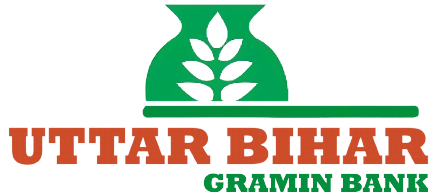Table of Contents
Got a solid idea and the grit to execute it—but need funding to get off the ground? Uttar Bihar Gramin Bank (UBGB) implements the Prime Minister’s Employment Generation Programme (PMEGP) to help first-time entrepreneurs build new micro-enterprises and create local jobs. Below is a clear, no-jargon walkthrough of how the scheme works, what you can borrow, how subsidy reduces your out-of-pocket, and how to move from idea to income.
What the scheme does (Purpose)
PMEGP finances new self-employment ventures, projects, and micro-enterprises across rural, semi-urban, and urban areas. The goal is simple: help you start a sustainable business that generates employment—either for yourself or for others—without drowning in complex paperwork.
Who can apply (Eligibility)
You’re in the target zone if:
- You’re 18 years or older and have at least 8th standard pass education.
- You’re a resident of UBGB’s service area.
- You’re not a loan defaulter with any bank/financial institution.
- Self-Help Groups (including BPL SHGs) can apply provided they haven’t already taken benefits under another scheme.
PMEGP is for new units (not expansions of existing ones). If you’ve never had formal credit but run a viable idea with local demand, this is designed for you.
What you can borrow (Type of Loan & Quantum)
PMEGP supports both:
- Term Loan (TL) for fixed assets (machines, tools, shop/workshed fit-out), and
- Working Capital (CC/limit) to buy raw materials and run day-to-day operations.
Project cost caps
- Manufacturing: up to ₹25.00 lakh
- Service/Business: up to ₹10.00 lakh
Bank finance share (of project cost)
- General category: up to 90%
- Special category (as per scheme): up to 95%
(Whichever is less, subject to appraisal and scheme norms.)
What it costs (Rate of Interest)
- Indicative ROI: 12% p.a., monthly compounded (subject to change per bank policy).
Your sanction letter will show the exact rate applicable to you and how interest applies across the TL and working capital components.
How you repay (Tenure & Renewal)
- Repayment: 3 to 7 years, including moratorium (grace period) to set up, stabilize sales, and start cash flows.
- Working capital limits are reviewed/renewed annually, keeping your day-to-day liquidity aligned with real demand.
The subsidy that shrinks your cash burden
PMEGP includes a back-end subsidy (margin money) credited to your loan account after successful verification and lock-in:
- General category: 15% (urban) | 25% (rural)
- Other/special categories: 25% (urban) | 35% (rural)
Quick illustration (for feel, not a quote)
Suppose you set up a service unit in a rural area with ₹8.00 lakh project cost (tools + initial working capital):
- Bank finance (general category @90%): up to ₹7.20 lakh (subject to appraisal)
- Promoter’s contribution: balance from you
- Subsidy (rural, general @25%): ₹2.00 lakh (credited as per scheme rules, after lock-in and compliance)
The subsidy doesn’t come to you in cash; it sits in your loan account and reduces your effective loan outstanding—which is exactly what lowers your interest cost over time.
What the bank needs (Insurance, Security, KYC)
- Insurance: Comprehensive insurance of stock and machinery is mandatory—sensible protection for a new business.
- KYC: Standard KYC for promoters/partners and basic business documentation as guided by your branch.
- Security/collateral: As per UBGB’s and PMEGP guidelines for your case (the branch will clarify what applies to your project size and profile).
What to build with the money (Use of funds)
- Fixed assets: basic machinery, tools, equipment, point-of-sale gear, minimal renovation/fit-out.
- Working capital: raw materials, packaging, initial inventory, utilities, small logistics—enough runway to sell, collect, and repeat.
Match your purchases to actual demand; smaller, faster turns beat big, slow stocks when you’re new.
A simple path from idea to sanction (Step-by-step)
- Write a one-page plan: What you’ll sell, who buys, how you’ll reach them, and your cost/price math. Keep it real and local.
- Cost it out: Separate fixed (machine/tools/fit-out) and working capital (starting inventory, utilities). Fit within the ₹25L/₹10L caps.
- Visit UBGB early: Share your plan and seek guidance on documents, subsidy process, and timelines.
- Apply under PMEGP: Complete forms, attach education proof (8th pass), residency proof, and any vendor quotes.
- Appraisal & sanction: UBGB assesses viability, sets TL + WC structure, confirms rate/tenure, and explains subsidy lock-in.
- Disbursement & setup: Term loan typically goes to vendors; working capital gets activated against stock and sales cycle.
- Operate & comply: Keep bills, purchase/sales records, and insurance live; meet subsidy verification milestones; repay on schedule.
Documents checklist (typical)
- KYC: PAN (or Form 60/61), photo ID, address proof, photographs
- Education proof: minimum 8th pass
- Residence proof within UBGB’s service area
- Basic project report/quotations (machines, tools, setup)
- For SHGs: group resolution/records as guided by the branch
Your branch will give you a precise, short checklist for your profile.
Smart tips to keep EMIs comfortable
- Start lean, grow clean: Buy only what directly produces revenue in the next 60–90 days.
- Lock at least one anchor buyer/vendor: A small standing order or two regular customers smooths cash flow.
- Choose tenure wisely: Take a slightly longer tenure for lower EMIs; use part-prepayments after good seasons to cut total interest.
- Track numbers weekly: Note purchases, sales, receivables, and cash on hand. Even a pocket diary beats memory.
- Insure well, renew on time: Down time from damage/theft derails early momentum; insurance bridges shocks.
- Use working capital as intended: Stock that turns pays interest; idle stock eats interest.
FAQs (straight answers)
Is PMEGP for existing units?
No—new units only. (Upgrades/expansions generally don’t qualify.)
How is subsidy paid?
As back-end margin money into your loan account after verification and lock-in. It reduces your outstanding; you don’t receive it as cash.
Can I get both TL and WC?
Yes—composite financing is common: TL for assets, WC for running the unit.
What if I’m in a rural area?
Rural projects often enjoy higher subsidy percentages (as above), making EMIs lighter.
What if I need more later?
Build a clean repayment record. With proof of demand and steady sales, the bank can evaluate enhancements or separate MSME facilities.
Bottom line: UBGB’s PMEGP offering gives first-time entrepreneurs a practical launchpad: project caps of ₹25 lakh (manufacturing) / ₹10 lakh (service), bank finance up to 90%/95%, meaningful back-end subsidy, 3–7 year tenure, annual WC renewal, and compulsory insurance to protect your hard work. Walk into your nearest UBGB branch with your one-page plan, KYC, and vendor quotes—walk out with a financing path that turns your local idea into local jobs.

Kritti Kumari is a banker and MBA graduate who writes about banking, finance, and customer-friendly services. She simplifies complex financial products into easy guides, helping readers understand Bihar Gramin Bank’s offerings and make smarter money decisions.

